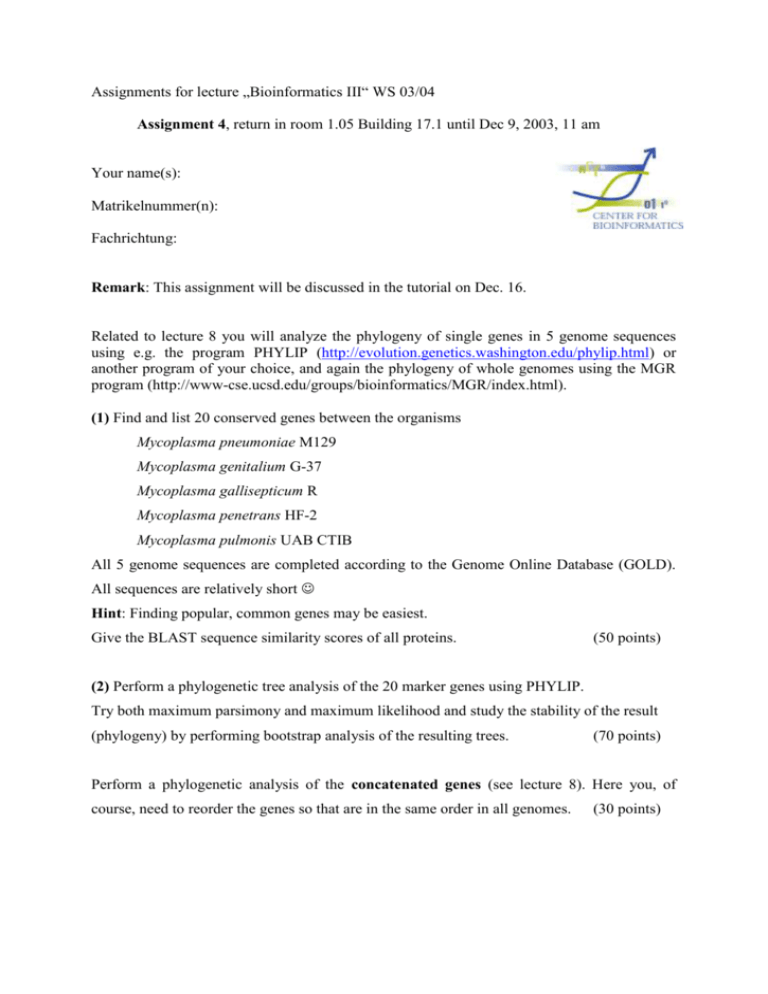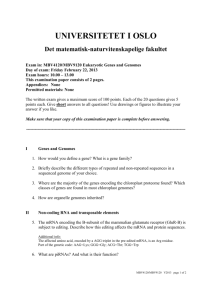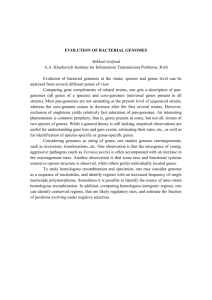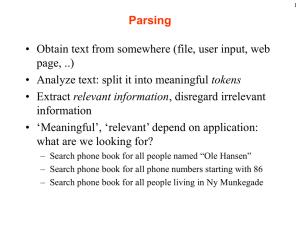Assignments for lecture „Bioinformatics III“ WS 03/04
advertisement

Assignments for lecture „Bioinformatics III“ WS 03/04 Assignment 4, return in room 1.05 Building 17.1 until Dec 9, 2003, 11 am Your name(s): Matrikelnummer(n): Fachrichtung: Remark: This assignment will be discussed in the tutorial on Dec. 16. Related to lecture 8 you will analyze the phylogeny of single genes in 5 genome sequences using e.g. the program PHYLIP (http://evolution.genetics.washington.edu/phylip.html) or another program of your choice, and again the phylogeny of whole genomes using the MGR program (http://www-cse.ucsd.edu/groups/bioinformatics/MGR/index.html). (1) Find and list 20 conserved genes between the organisms Mycoplasma pneumoniae M129 Mycoplasma genitalium G-37 Mycoplasma gallisepticum R Mycoplasma penetrans HF-2 Mycoplasma pulmonis UAB CTIB All 5 genome sequences are completed according to the Genome Online Database (GOLD). All sequences are relatively short Hint: Finding popular, common genes may be easiest. Give the BLAST sequence similarity scores of all proteins. (50 points) (2) Perform a phylogenetic tree analysis of the 20 marker genes using PHYLIP. Try both maximum parsimony and maximum likelihood and study the stability of the result (phylogeny) by performing bootstrap analysis of the resulting trees. (70 points) Perform a phylogenetic analysis of the concatenated genes (see lecture 8). Here you, of course, need to reorder the genes so that are in the same order in all genomes. (30 points) 20 Bonus points: List the order of the 20 genes you found on all 5 genomes. Are they the same? If not, use the MGR server multiple times (on combinations of 3 out of the 5 genomes) to construct a common ancestor. Compare the phylogenetic tree from MGR with the previous PHYLIP tree for the concatenated genes. Another 20 Bonus points: Suggest an algorithm that combines (and converges) the results of MGR and PHYLIP phylogenies. Another 10 Bonus points: Discuss the biological relevance of your findings. (If you are so carried away by the biological relevance of your results you should consider writing a paper about it and send to a journal quickly.)






